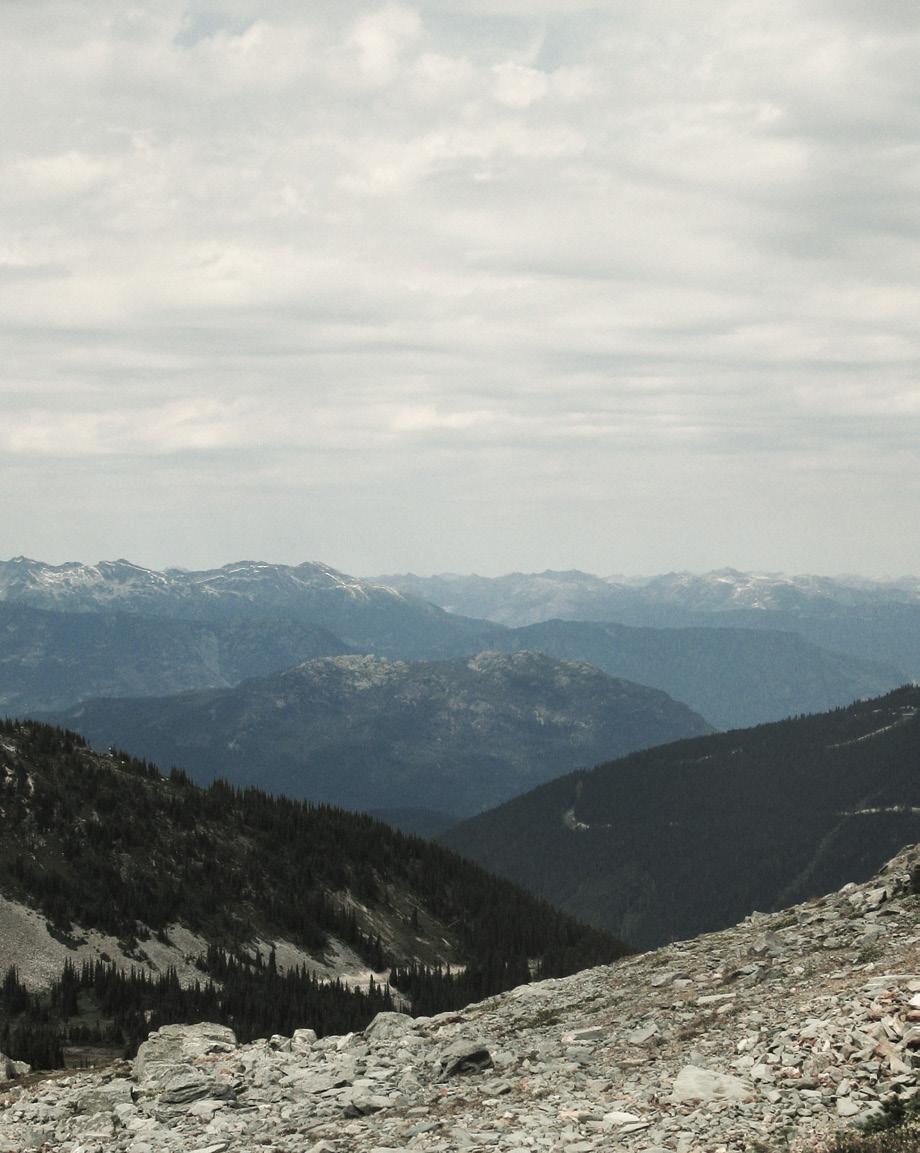

GILLIAN MARSH ARCHITECTURE PORTFOLIO
WINTER 2025
NEXT YEAR WE MARCH NAKED
TYPE Pavilion DATE
December 2024
ADVISOR Quan ThaiQueer Studio
SOFTWARE Rhino, Illustrator, Photoshop, InDesign
In collaboration with Erin Kim
Next Year We March Naked is located in Sankofa Square (formerly Yonge-Dundas Square) and designed as a sister project with Erin Kim, whose design resides in Bellevue Square Park (is not featured). Sankofa Square today is frequented by commuters, shoppers, tourists, unhoused people, and visited by the annual Toronto Pride Parade. NEXT YEAR WE MARCH NAKED brings entirely new programming to the site, questioning what society defines as the public realm and what we allow to exist in it. The changeroom, sauna and stage element encourage occupation that challenges existing conditions and a veil that facilitates interaction.
“Every street a part of our sexual geography. A city of yearning and then total satisfaction. A city and a country where we can be safe and free and more. We must look at our lives and see what’s best in them, see what is queer and what is straight and let that straight chaff fall away! Remember there is so, so little time. And I want to be a lover of each and every one of you. Next year, we march naked.”
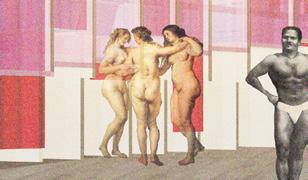

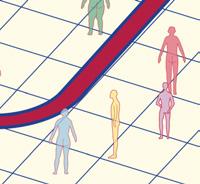
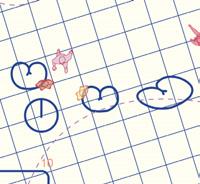
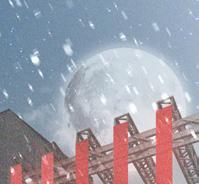
Text of a manifesto originally passed out by people marching with the ACT UP contingent in the New York Gay Pride Day parade, 1990. -
Throughout NEXT YEAR WE MARCH NAKED, we attempt to challenge norms, stopping not even with architectural graphic representation. Trying to bring fun, humour, and maximalism, we diverge from traditional and normative architecture drawings. Throughout the project’s drawings and renderings you will find representations of the naked human body, underbelly axometric views of buildings , full moons (literally and figuratively) and even a butt north arrow.
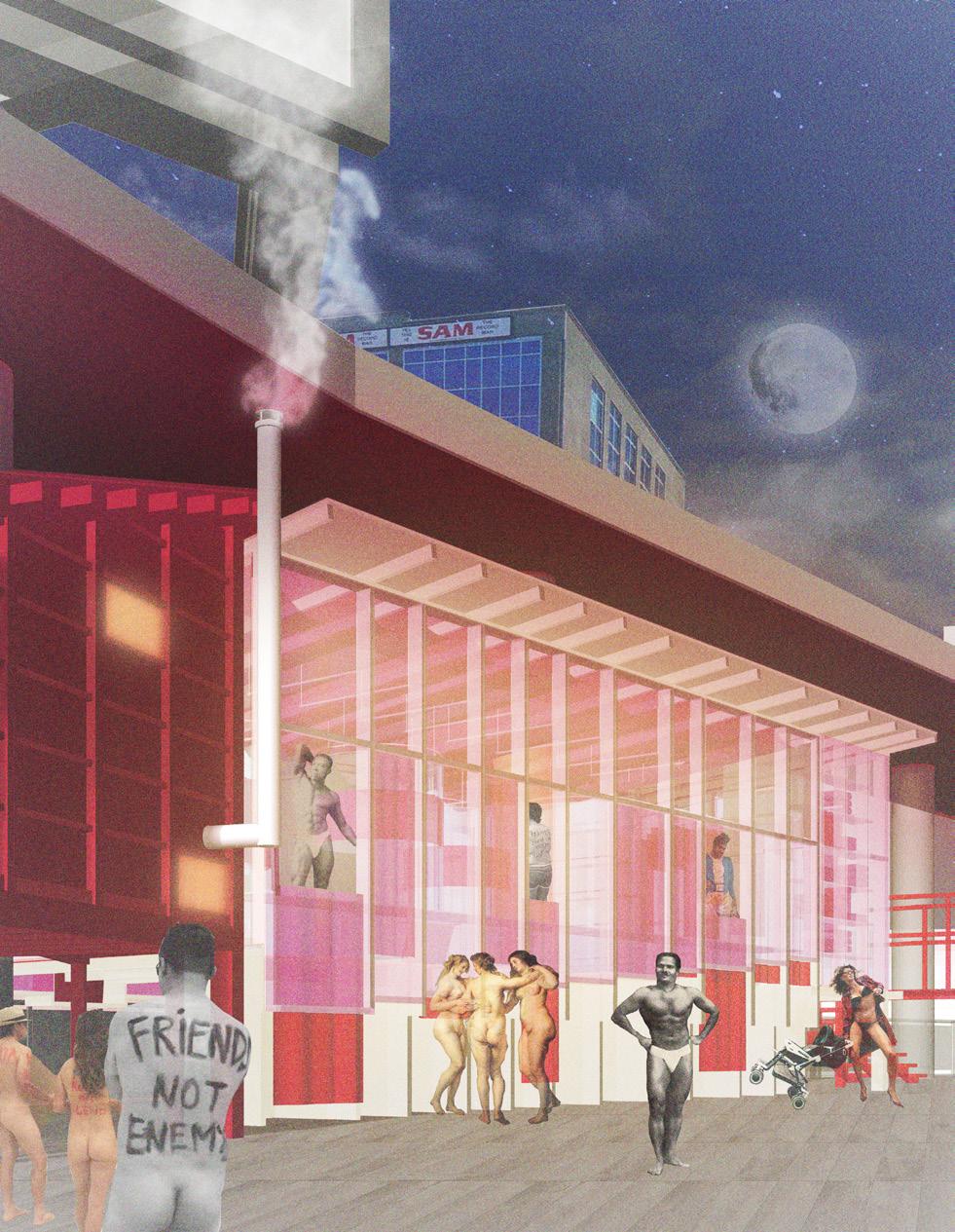

The change room intervention primary feature is a veiled material that is used throughout the building to encourage interaction, whether it be directly person-person or over time through mutual aid. This manifests as collaborative change room curtains, mutual aid closet + shelves, fabric seating and tug-of-war change rooms.


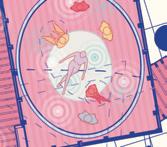

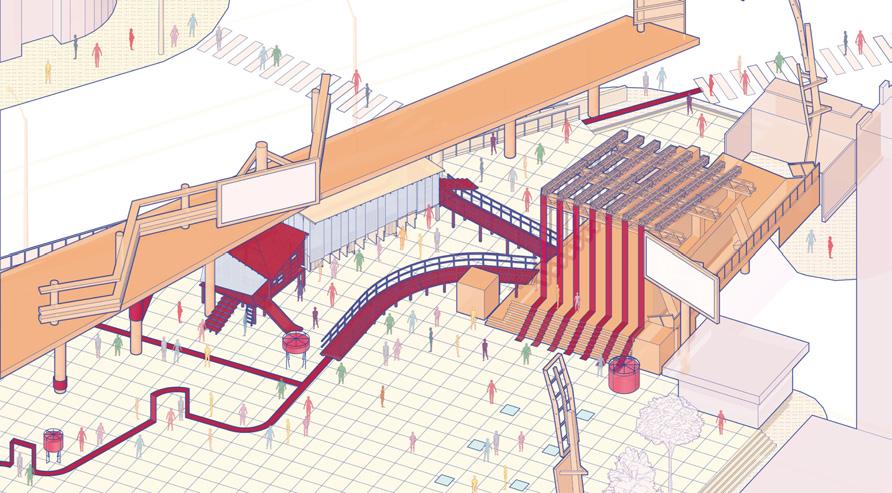
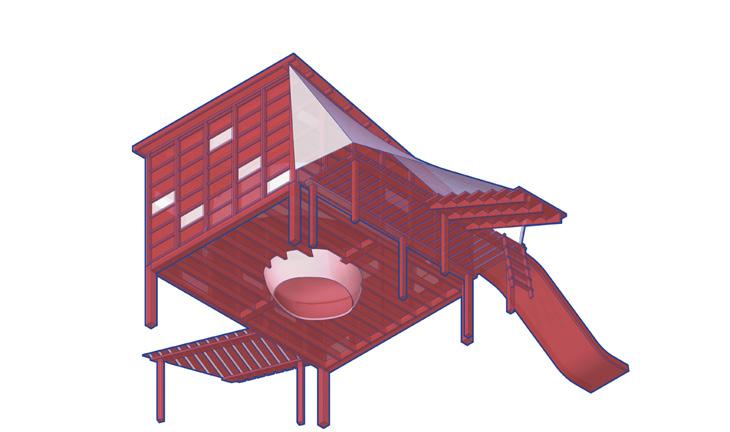
The two main elements of the sauna is it’s maroon colouring and radiant heating piece. Maroon is devised in this project as a sultry, seductive colour that subverts a typical wooden sauna, as well as the surrounding public space. The radiant seat is accessed from inside and outside the sauna, and focuses on heating bodies instead of architectural space. DRAWING LABEL
PEEKABOO FACADE
CHANGE ROOM ROOF
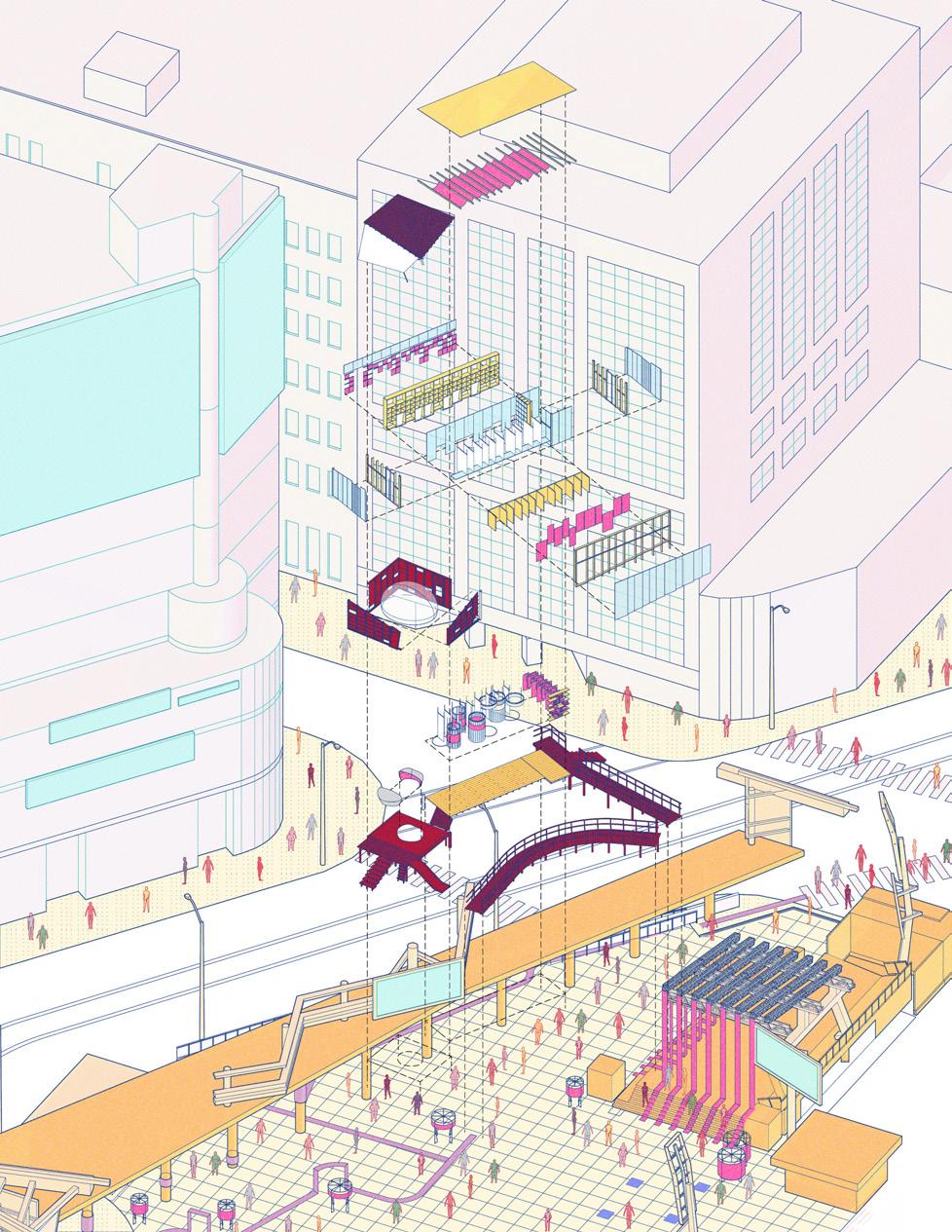
CHANGE ROOM INTERIOR CANOPY
SAUNA ROOF
TEXTILE PORCH COVER
POLYCARBONATE
MUTUAL AID BLINDS
MUTUAL AID CUBBIES HAVE A SEAT
POLYCARBONATE
TEXTILE CR PARTITIONS
MY TURN! MY TURN! CR
MY TURN! MY TURN! CURTAINS
PEEKABOO FACADE INTERIOR SAUNA BUBBLE
TEXTILE CR PARTITIONS
FIND-A-FRIEND CR
RADIANT HEATING
BRIDGE BETWEEN SAUNA-CR
KISSING PAVILIONS
SAUNA SLIDE
RAMP
BABY IT’S COLD OUTSIDE

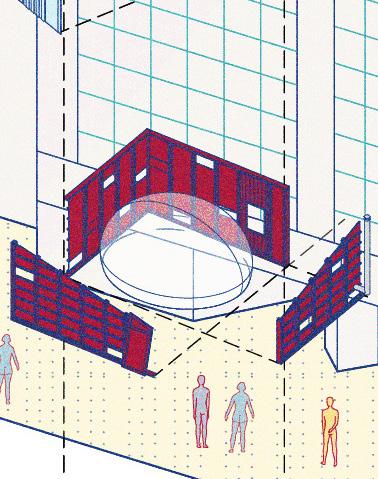

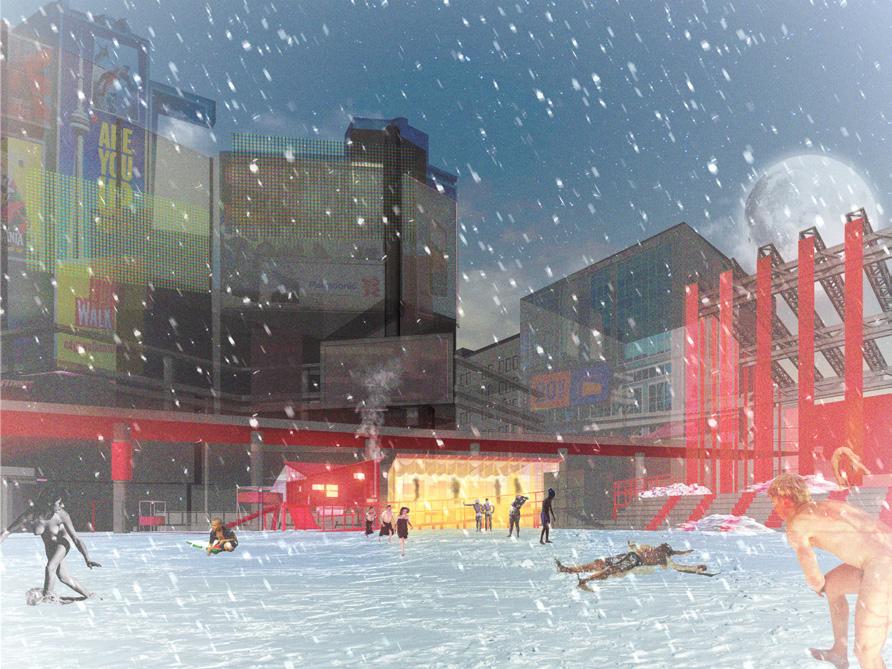
CHANGE ROOM EXPLODED AXO
SAUNA EXPLODED AXO
STAGE AXO
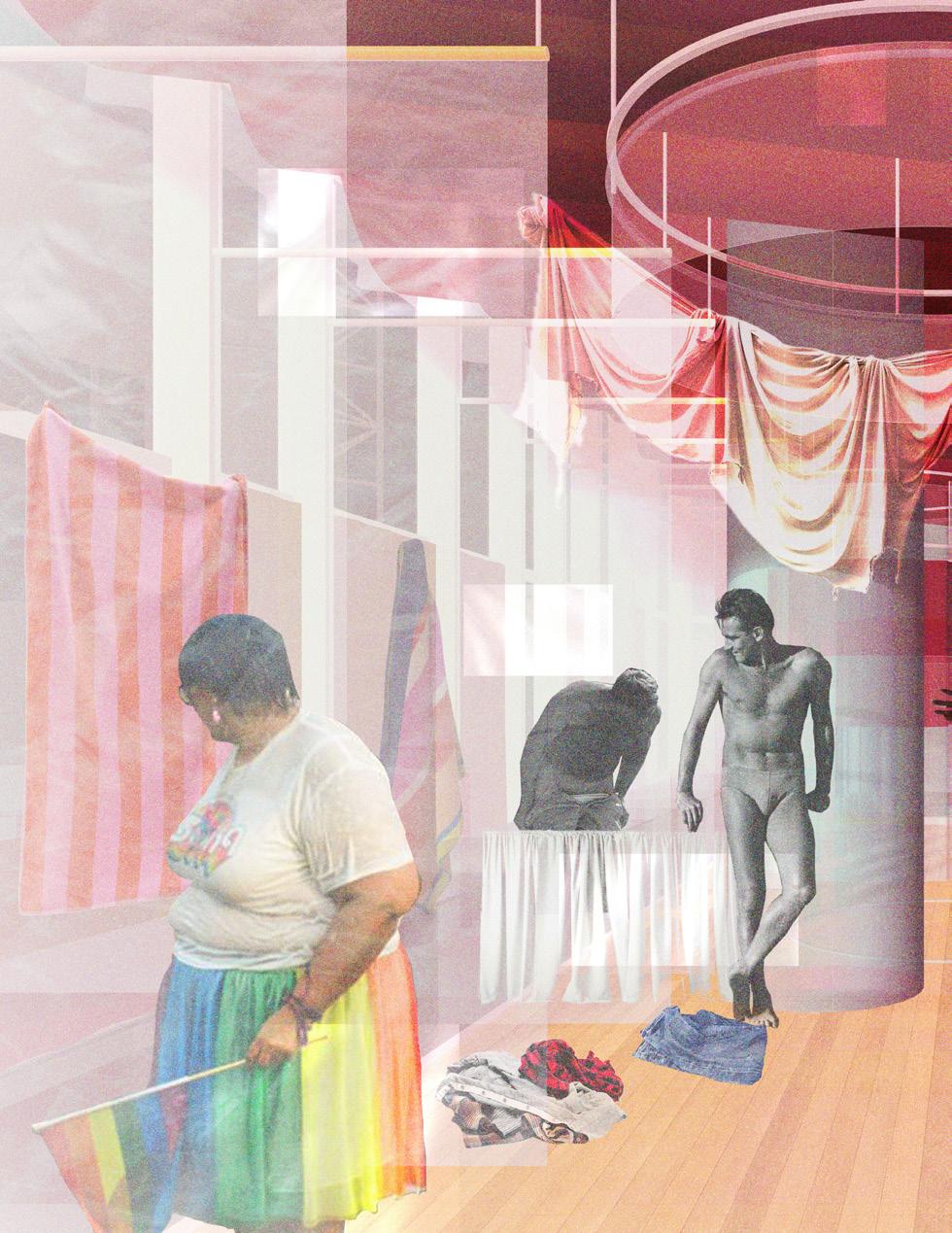
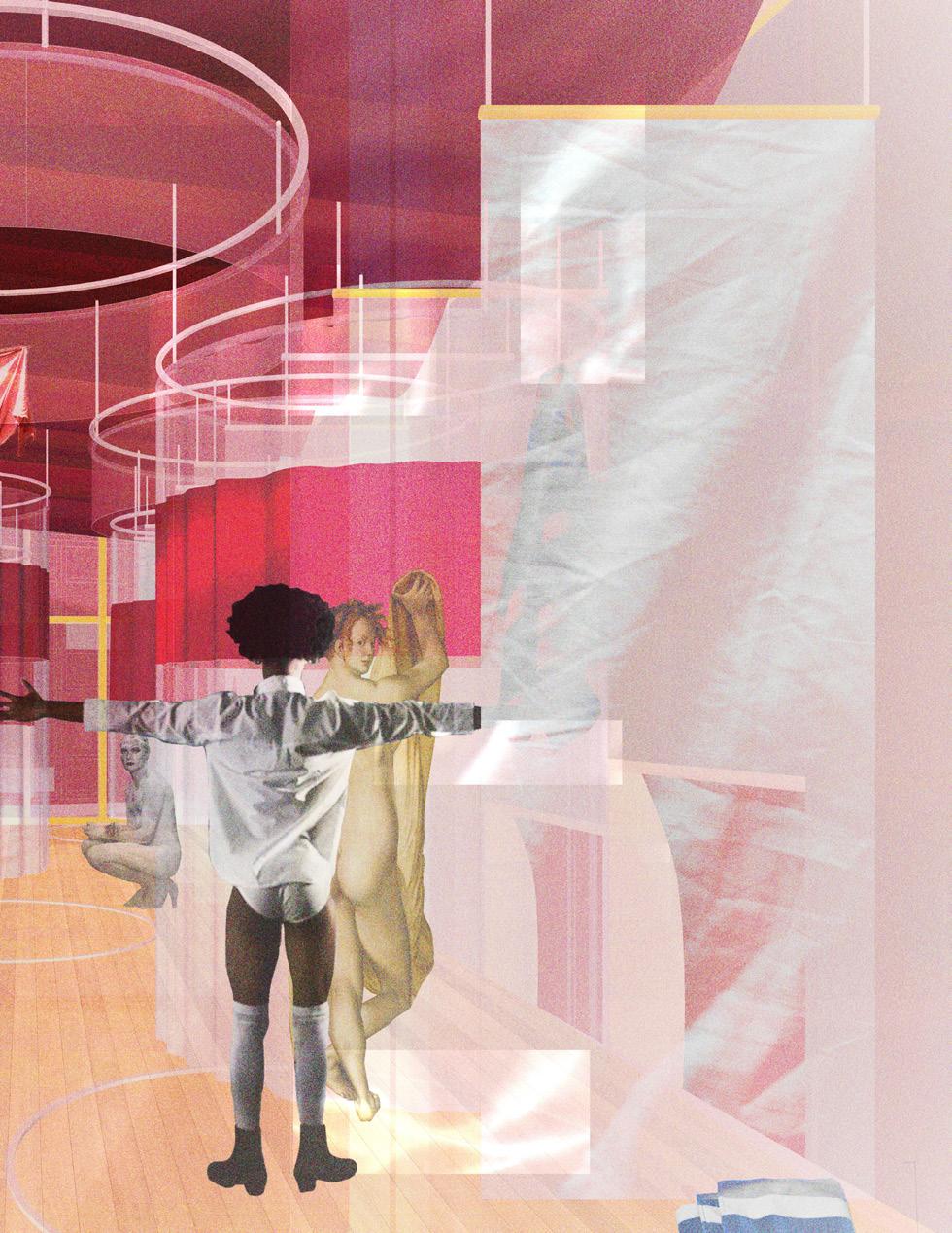
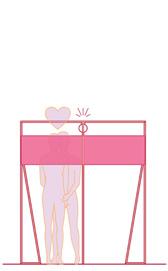
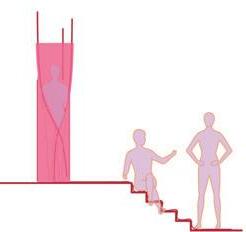
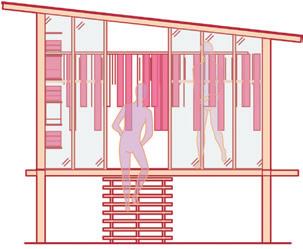
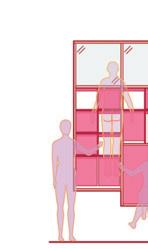
These extracted elevations serve as a sort of manual to the various multitude names, these drawings show simplified versions of people interacting with and

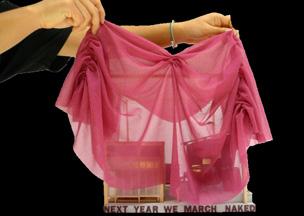
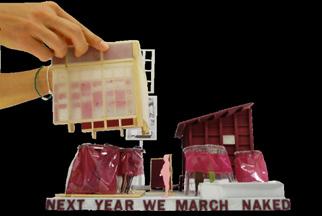
In this studio, we were challenged to create a fragment model of ling concepts. Our final 1:50 model plays with the act of undressing, maintaining the

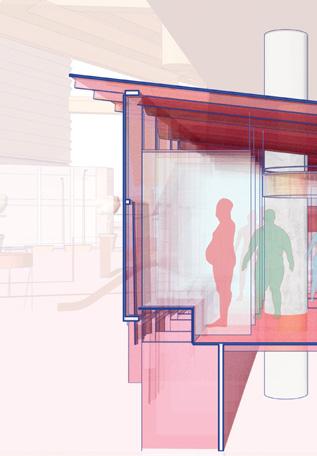
WALK-THROUGH CLOSET HAVE A SEAT
BABY IT’S COLD OUTSIDE KISSING PAVILION
WALK THROUGH

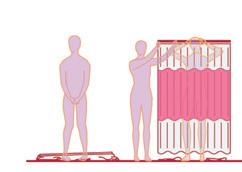

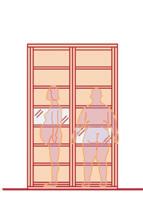

FIND-A-FRIEND MY TURN! MY TURN! SMILE! YOU’RE IN DRAG RADIANT BODIES
multitude of components found in the Sankofa Square intervention. Along with playful using spaces that intend to force community, collaboration and challenge norms.



of our combined projects, that distilled the most potent and compelability to pull off layers and components until only the naked human body is left.

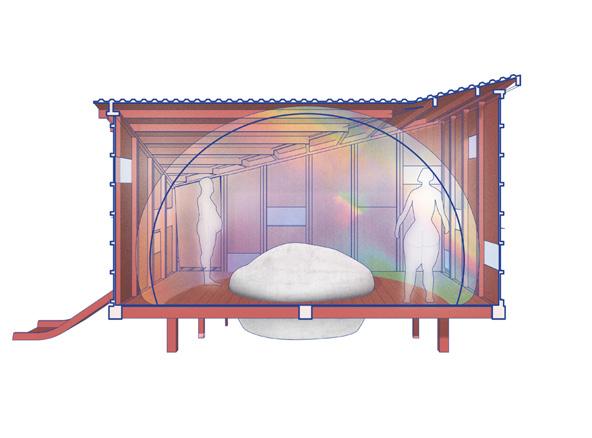
COLLECTIVIZE THE GARDEN CITY!
TYPE
Urban Planning DATE
August 2024
ADVISOR
Adrian Blackwell SOFTWARE Rhino, Lumion, Illustrator, Photoshop, InDesign
GROUP
Chelsea Wu
Cindy He Rona Kong
Situated on the historical and industrial lands, ‘Collectivize the Garden City!’ aims to improve housing alienation and food scarcity in the Hespeler area by utilizing the core tenets of a gentrification tax to imagine an urban strategy of connectivity; to not only maintain but also support the density of an urban space that accepts the influx of long-term residents brought in by the train station, the project incorporates various collective housing approaches to create intentional communities of greater support amongst residents.
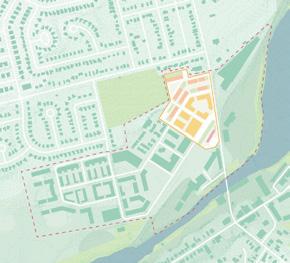


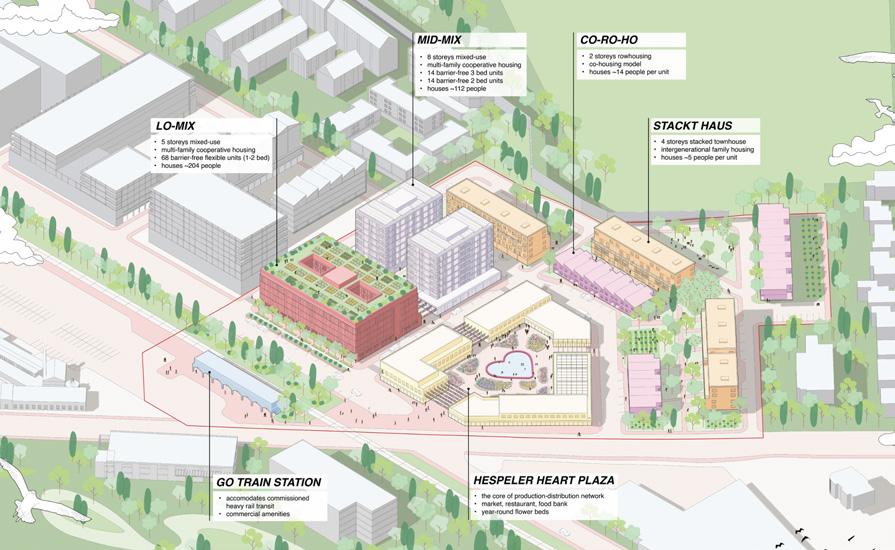
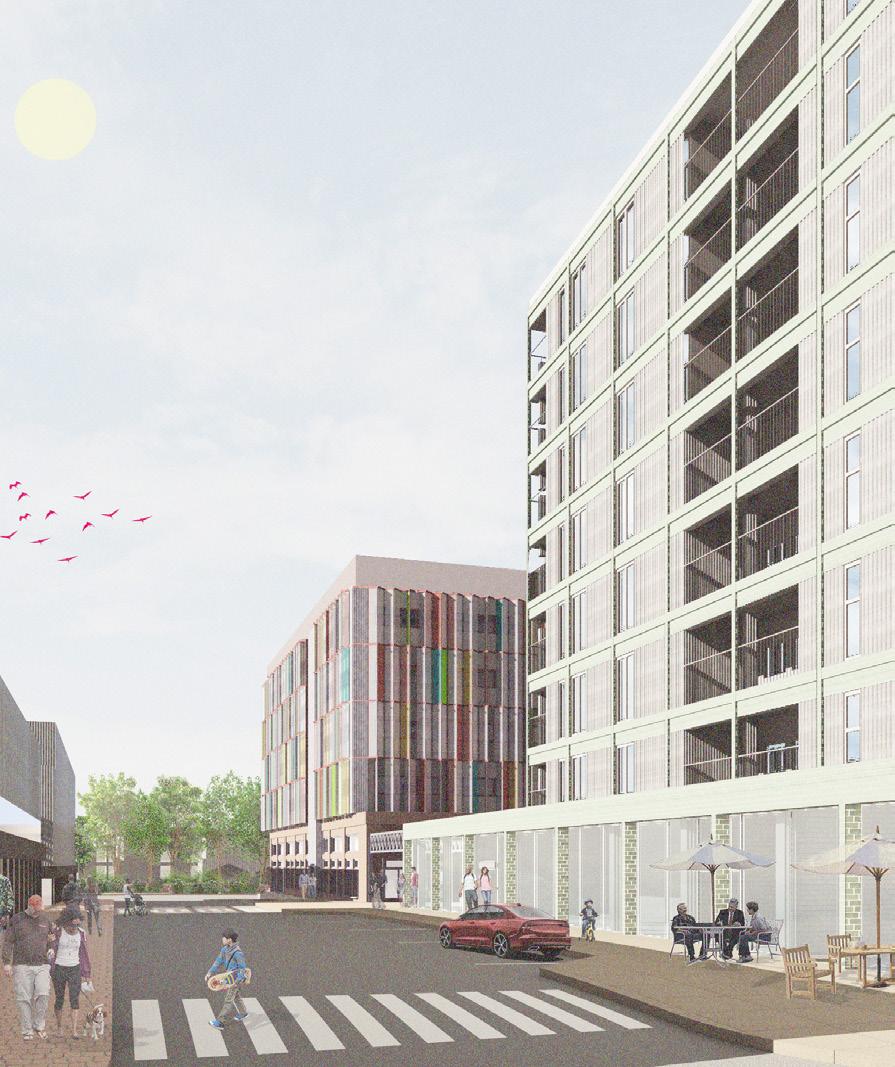
A circular economy of layered networks is created by maximizing both creative outlets to speak to the site’s industrial character, as well as a diverse set of green spaces heavily integrated into the residential fabric.
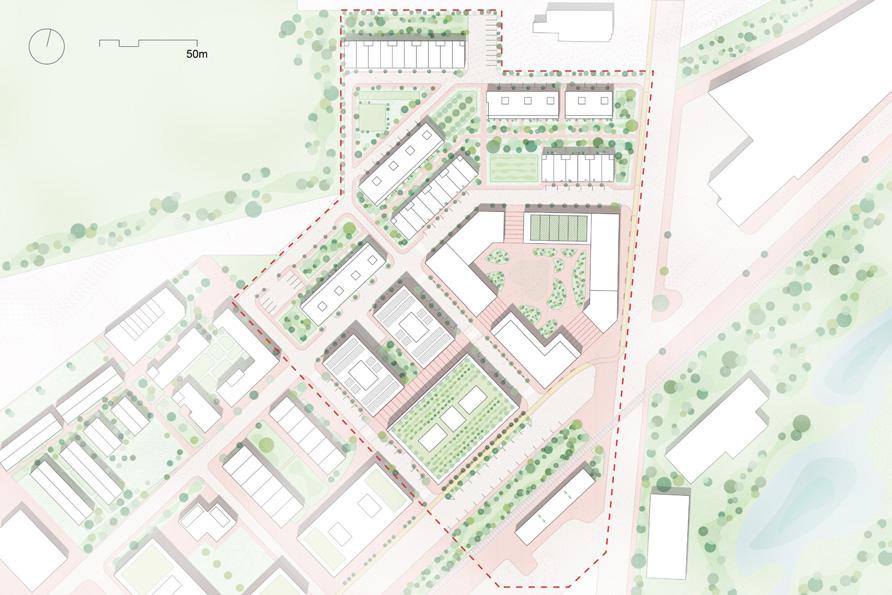





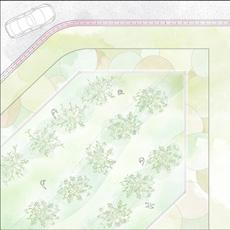
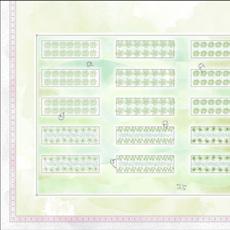
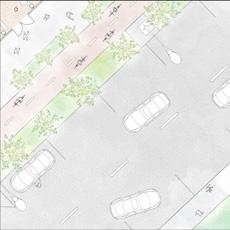
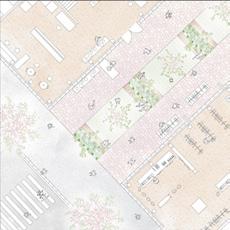
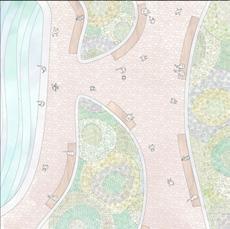
Through an emphasis on sustainable production and distribution in layers, the greater social needs are addressed and the community value that brought about the initial ‘unearned increment’ stays within the area to further strengthen the neighbourhood.

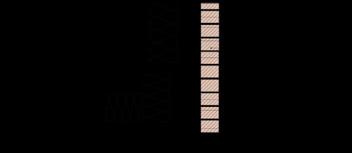

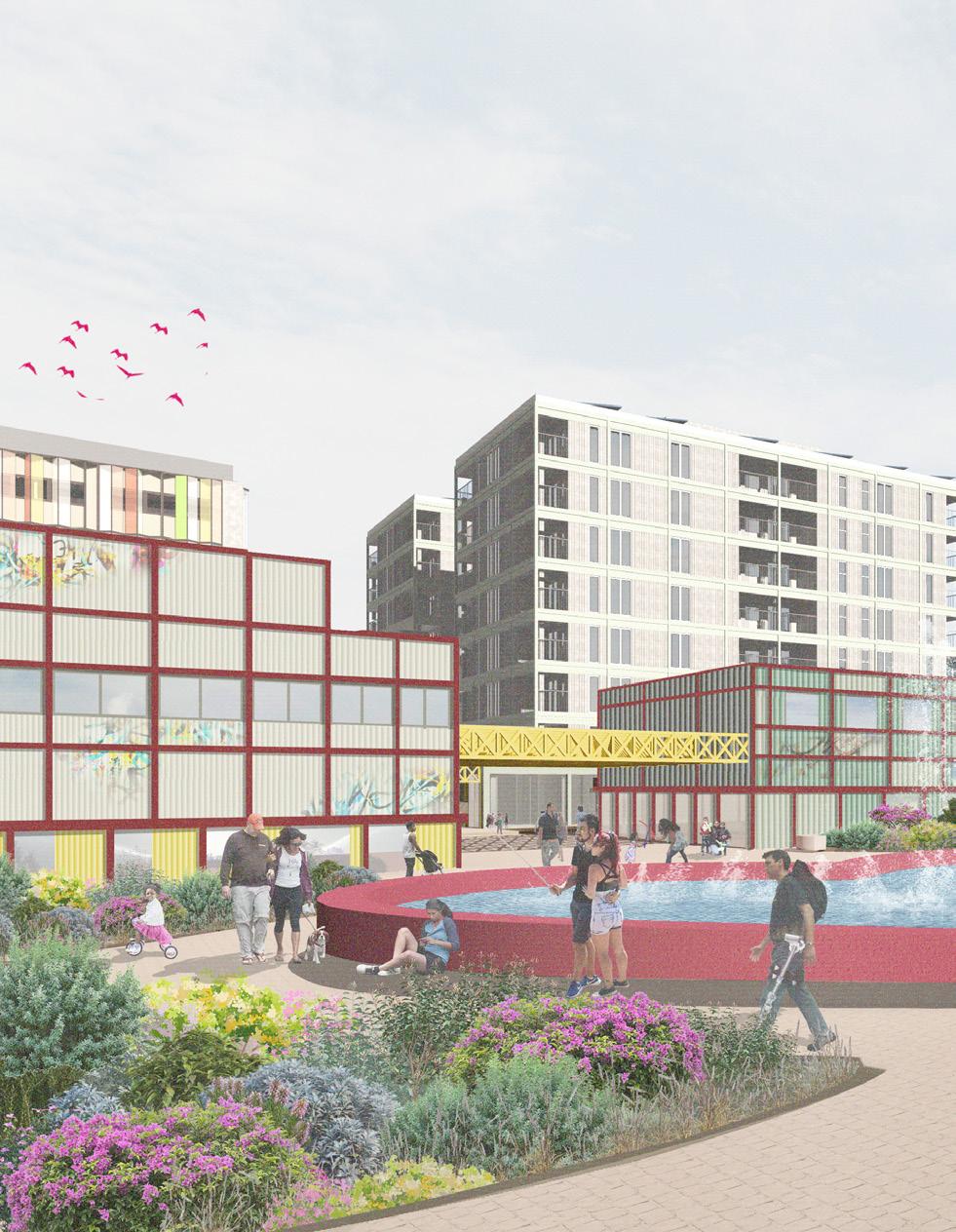
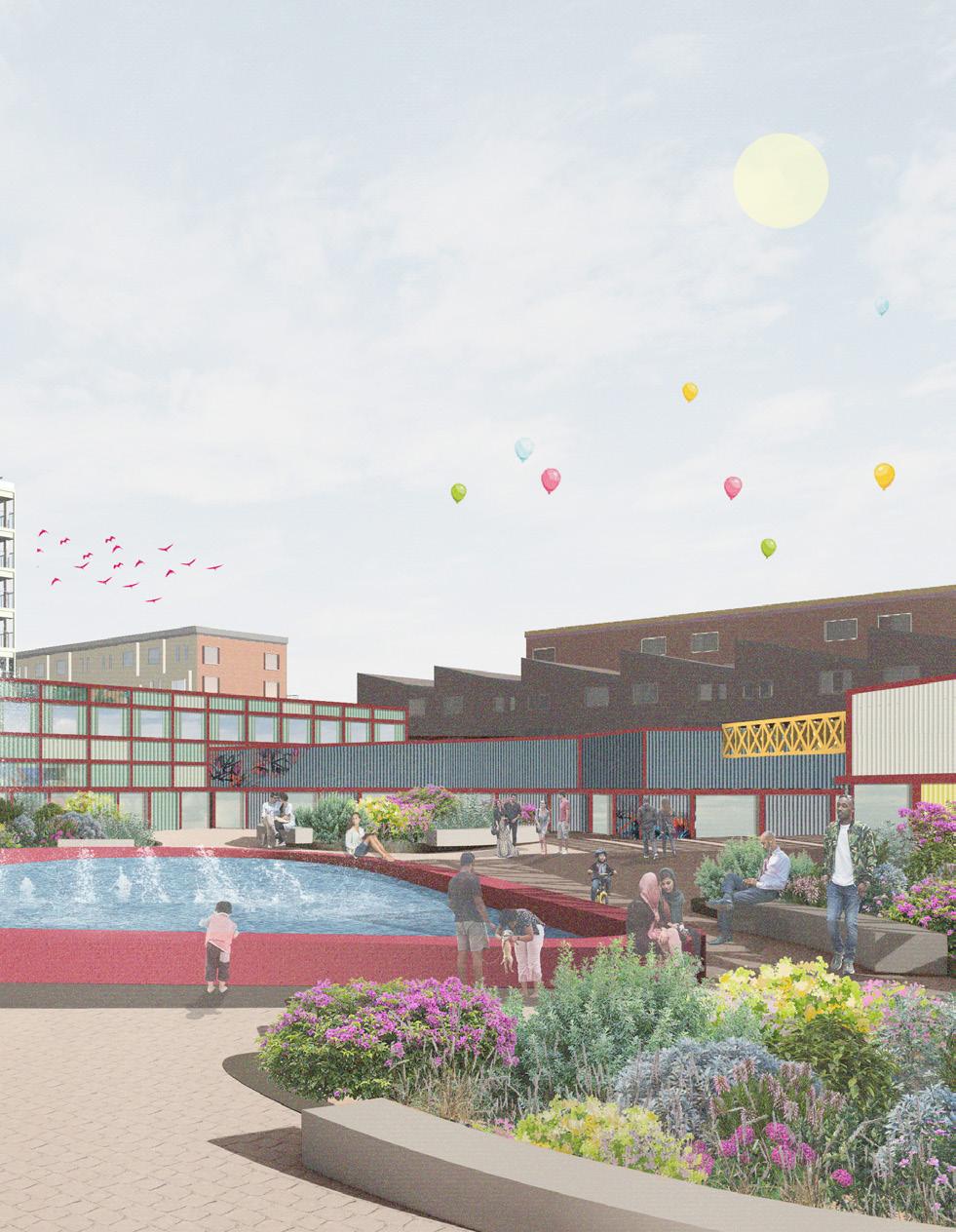

MAKER’S ALLEY VIEW
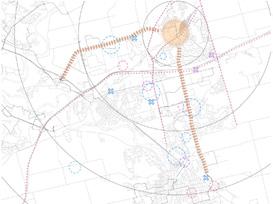

MAJOR ROADS
MINOR ROADS
BUILDING FIXTURE

WINDOW SUPPLIER
BRICK SUPPLIER
STEEL SUPPLIER
SUPPLIER WOOD SUPPLIER
CONCRETE SUPPLIER

The diagram above maps local building material suppliers in Cambridge measured in sections of 5km. Special materials such as CLT will be supplied off site. Below are life cycle diagrams of materials used, reused, and manufactured on site.

Wood is extracted and manufactured into furniture or building material. At its end of life, the wood can be recycled or composted for the community gardens in a continuous cycle. The new plant also offset the CO2 from the production.
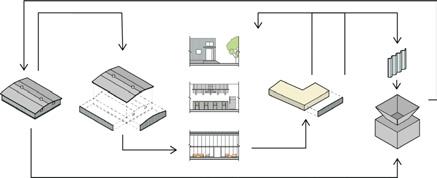
The corrugated metal from the existing industrial building are reused in the new development for cladding, interior, and finishing, keeping the industrial history. At its end of life, the metal can be recycled and used as new building material.

Limestones and waste from demolishing the exiting buildings are reused in the process of making fly ash brick for construction.
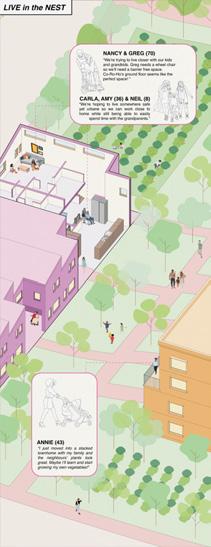

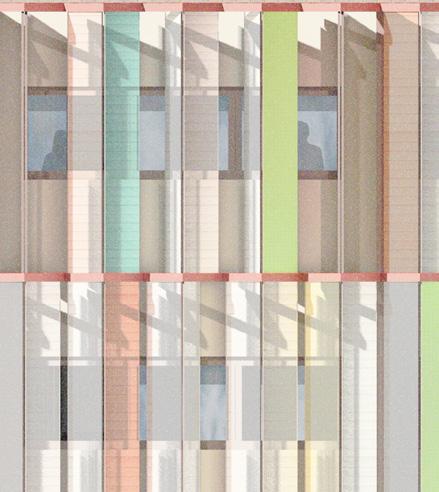
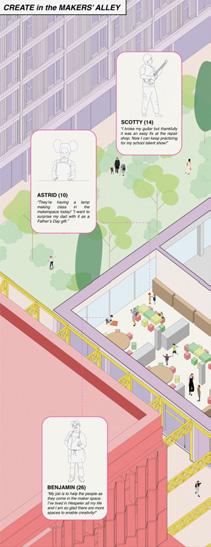
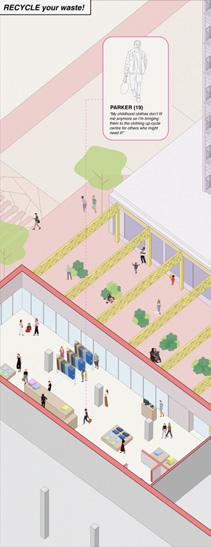
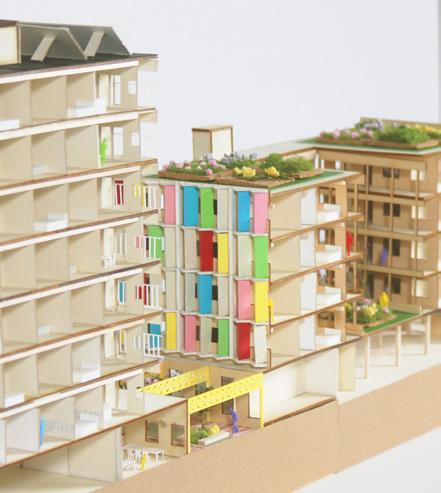
STORYBOOK AXO
THE NEST
The typologies of the NEST features designed spaces such as communal kitchens, large community gardens, and optimized orientation for natural lighting to build intentional communities within each housing complex. Situated closest to the suburbs north of the site, the NEST provides the social benefits of living collectively while creating a sense of safety and privacy.


LOW-MIX
The LOW MIX housing units surround courtyards framed by a partially enclosed balcony. Units are mirrored with flexible partitions built in consultation with occupants for agency and adaptability. Laundry facilities are provided in a communal space, and lighting is diffused with the use of operable shading throughout the building’s facade.
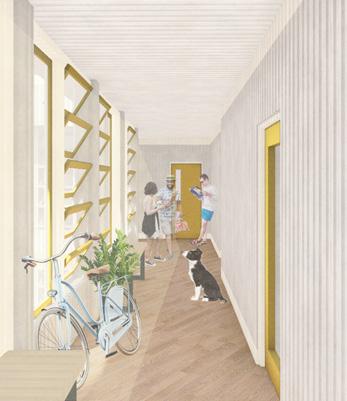

LOW-MIX
LOW-MIX FLOORPLATE
STACKT HOUSE
The STACKT HOUSES are stacked townhouses with a barrier free ground floor and a shared light well between the units to maximize daylighting. The NEST features another variation of this type that includes parking on the ground floor

MID-MIX
The MID-MIX housing consists of two 2 bedroom units and two 3 bedroom units that are designed to accommodate either single individuals or families.
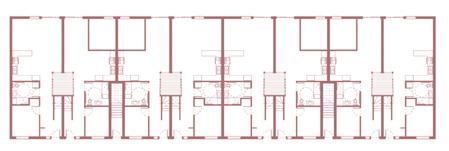



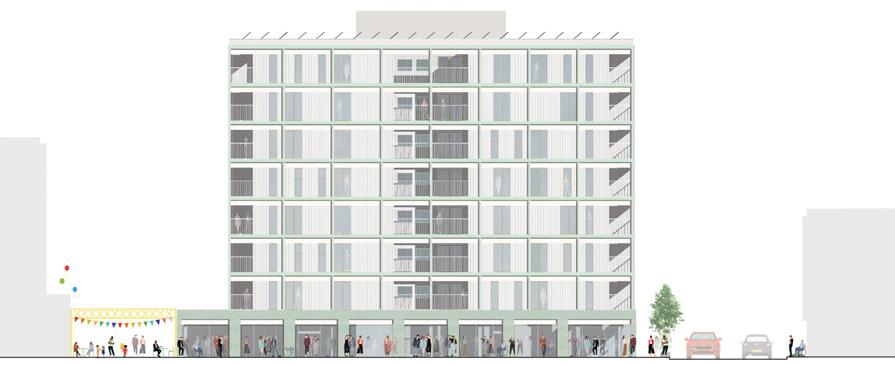
Units surround a communal kitchen space that includes shared laundry facilities and a balcony that faces Makers’ Alley.
MID-MIX ELEVATION
MID-MIX FLOORPLATE
MID-MIX 3 BEDROOM UNIT PLAN
STACKT HOUSE ELEVATION
STACKT HOUSE UNIT PLAN
STACKT HOUSE FLOORPLATE
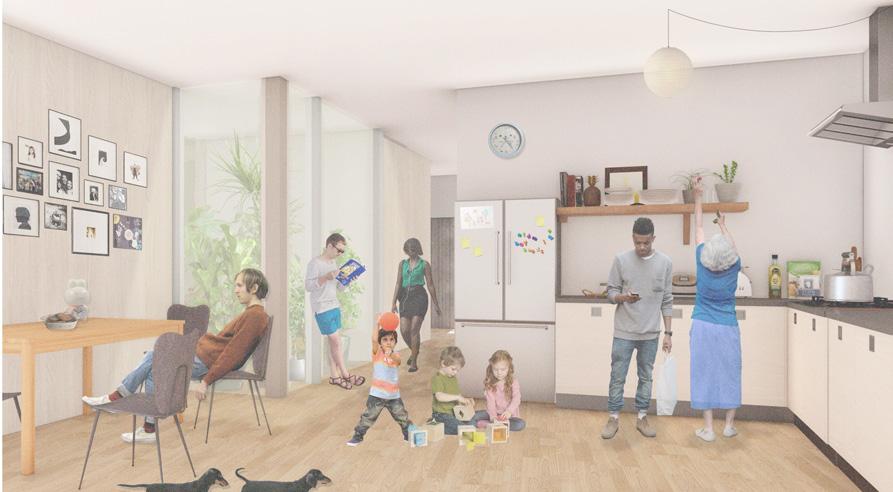
CO-RO-HO
Communal row housing AKA CO-RO-HO feature a communal kitchen between potentially 4 different occupant groups. This housing is meant to accommodate all demographics with a barrier free ground floor and flexible occupancy.



STACKT HOUSE KITCHEN VIEW
CO-RO-HO FLOORPLATE
CO-RO-HO
CO-RO-HO
LAND BASED HARVEST LODGE
TYPE Lodge DATE August 2023
ADVISOR
Tracey Eve Winton
SOFTWARE Rhino, Enscape, Illustrator, Photoshop, InDesign
The Land Based Harvest Lodge is located in French River, Ontario, surrounded by beautiful forest and granite rock shaped by glacial formations . This project houses a land based harvest workshop intended as a summer camp for children and workshop for adults during fall and spring months. The main lodge is made up of 7 individual mass timber buildings, each with different programming that all contribute to the land based food harvest workshop. These individual buildings shift with the granite landscape and are tied together with a constructed walkway. This formation creates a courtyard that acts as the heart of the project, with a hearth sitting directly on granite. Altogether, the project shifts with the landscape and mimics the geometry of the granite.
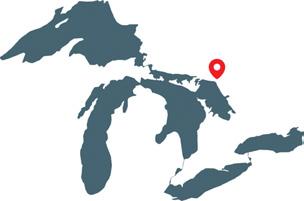
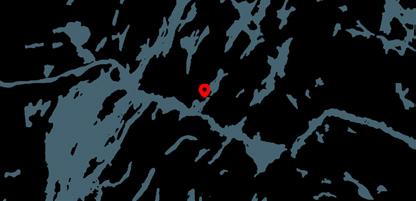

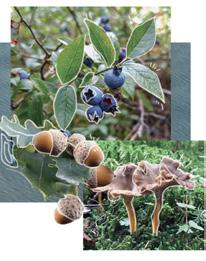

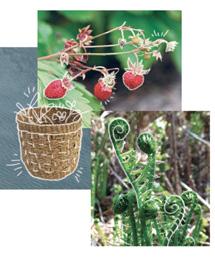

FRENCH RIVER MAP
GREAT LAKES MAP
MAIN LODGE VIEW
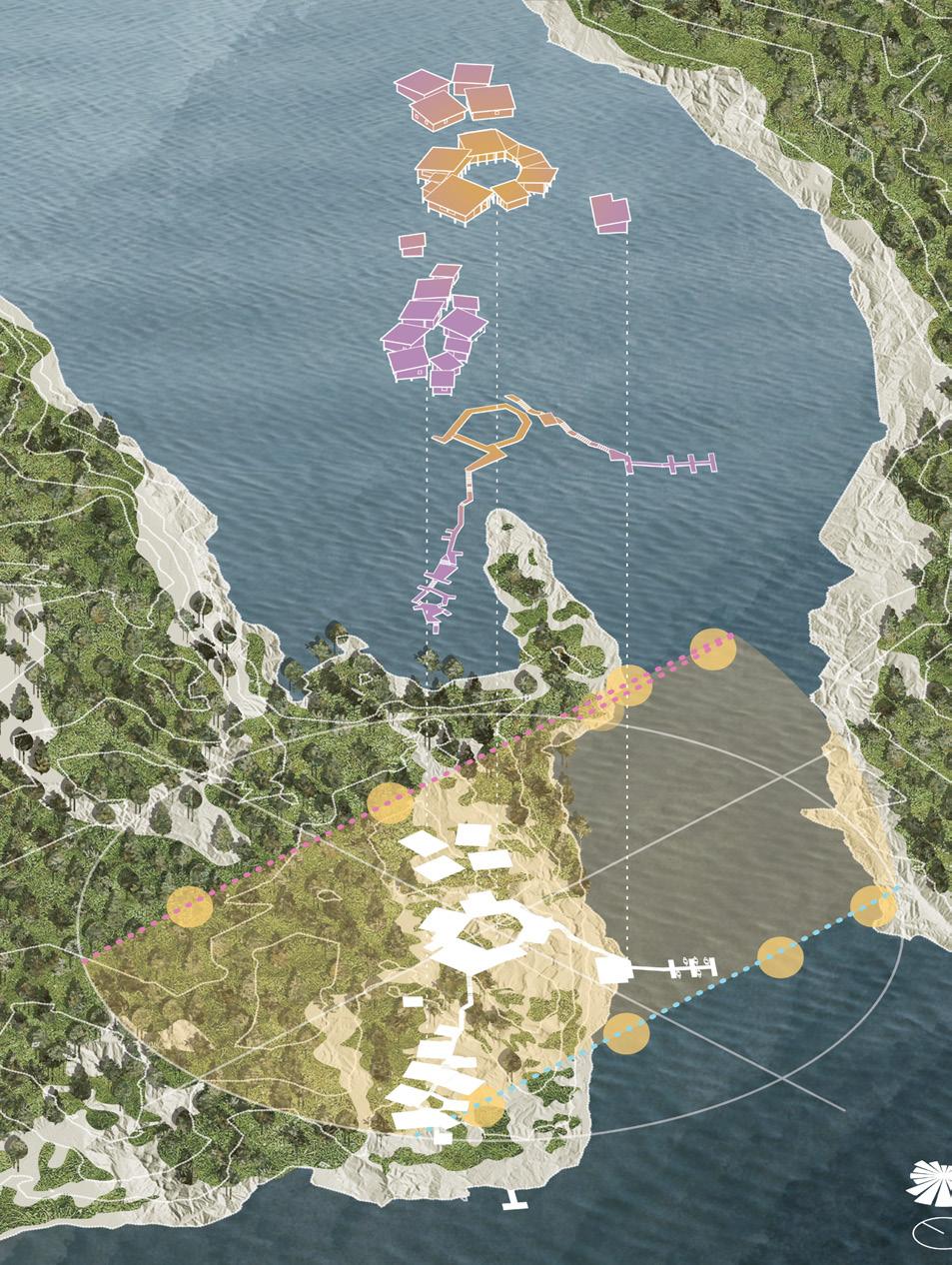
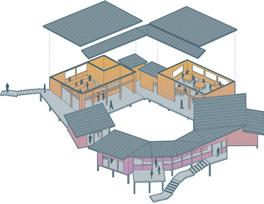




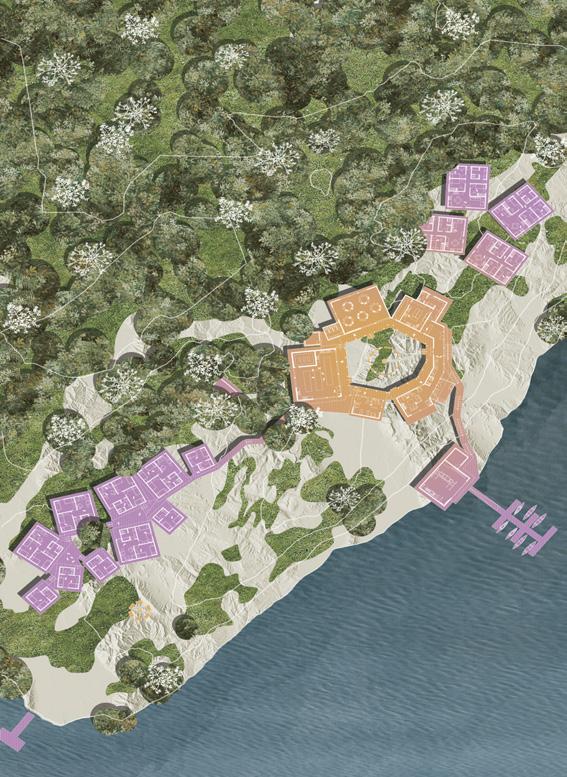

SITE PLAN
MAIN LODGE PHYSICAL MODEL
MAIN LODGE AXO
The programs located in the main lodge include dining, preparation / cooking, reception, lounge, library. Within and near the courtyard you can find a smokehouse, drying rack and storage room. The programming in the main lodge supports ideas to live lightly on the land, in which visitors get to participate in minobimaatisiiwin - a way of living - instead of Traditional Ecological Knowledge.


MAIN LODGE UNFOLDED SECTION
MAIN LODGE COURTYARD VIEW
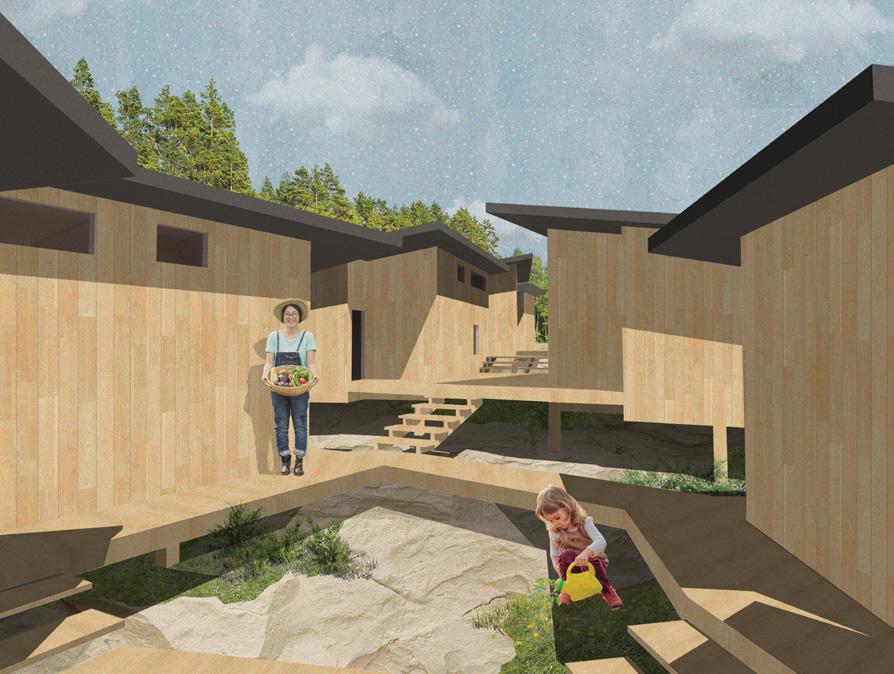
The walkway from the main lodge leads to the cluster of cabins where you can find two cabin types, one that houses two visitors and the other four. The dense sleeping quarters was chosen to minimize individual spaces to encourage visitors to spend time outdoors and in the workshop. This cluster includes walkways that shift dramatically to align with the landscape, and also opens up to create small courtyards and patios.

CABINS COURTYARD VIEW
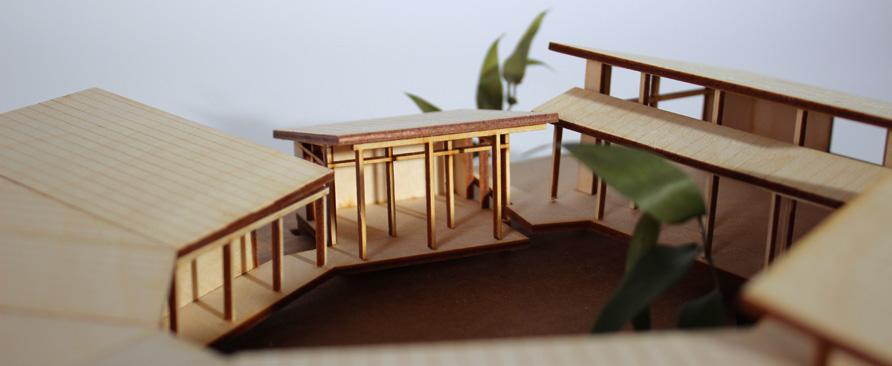


PHYSICAL MODEL COURTYARD PHOTO
PHYSICAL MODEL LIBRARY DETAIL
COMMUTER HUB LIBRARY
TYPE
Library DATE
April 2022

ADVISOR
Isabel Ochoa, Sifei Mo
SOFTWARE Rhino, Illustrator, Photoshop, InDesign

Located in Corktown, Toronto, the Commuter Hub Library is a key destination for people commuting to and from work. This public building is a union between a traditional library, bike repair and commuter centre. The Commuter Hub promotes sustainable transit - is located next to TTC street car lines, Bike Share Toronto stations, and prioritizes bikers.
As a building designed for the everyday commuter, this library includes bathrooms, showers, a cafe, and a bike parking garage - all on the first floor. The remaining programs can be reached with a completely accessible ramp that wraps around the floors.
The exterior landscaping involves car parking, exterior bike racks, and a ramp that leads to the underground bike parking garage as well as the original bike path that is under the street.

SITE PLAN
PHYSICAL MODEL SOUTHWEST ELEVATION
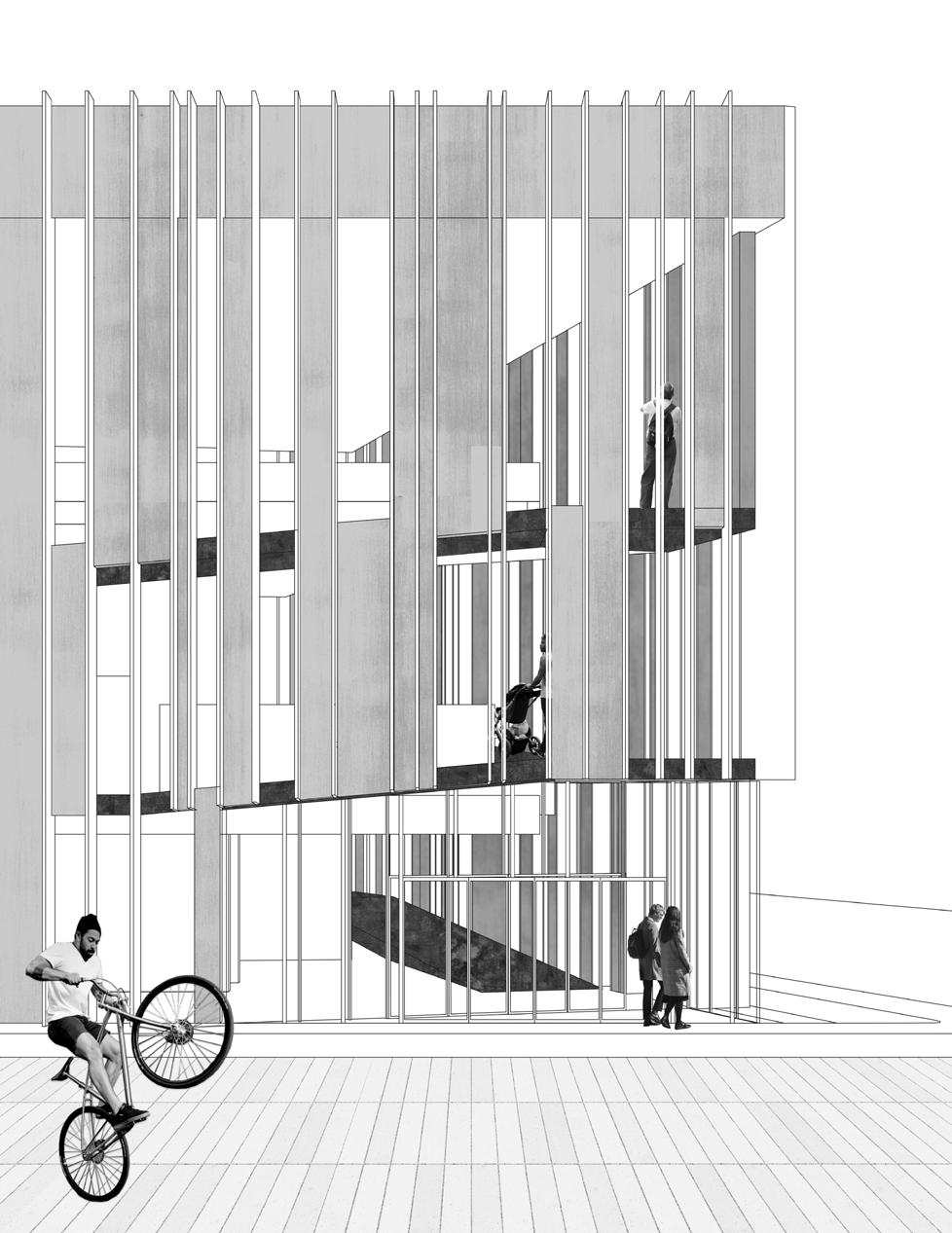
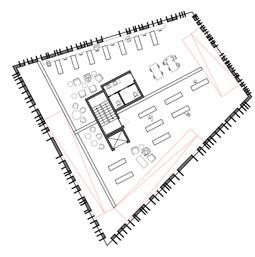
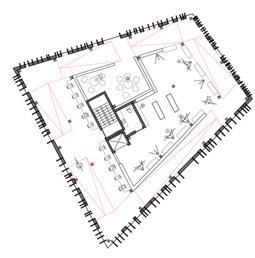

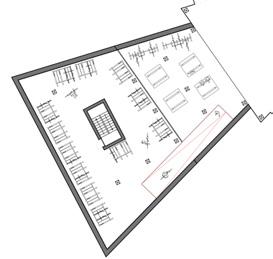
FORM FOLLOWS RAMP
The library’s parti is programs contained in separate floorplates that shift to the ramp that encircles the whole building. This creates a public building that is entirely accessible to everyone - from bikes, to strollers and wheelchairs. The floors align to the ramp to prevent or create privacy without the use of walls.

The facade detail is based on a ‘vitruvian bike’ in which the vertical fin arrangement is based on the proportions of a standard bike.
The fin depth varies for each side of the building, changing for different orientations to maximize passive heating and diffuse lighting. The spaces between vertical fins are filled to depending on the program of each floor and sun exposure.
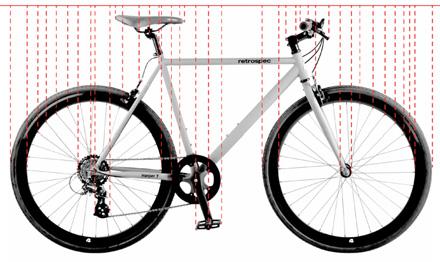
VITRUVIAN BIKE
3F PLAN (3.1, 3.2, 3.3)
2F PLAN (2.1, 2.2)
1F PLAN (1.1, 1.2)


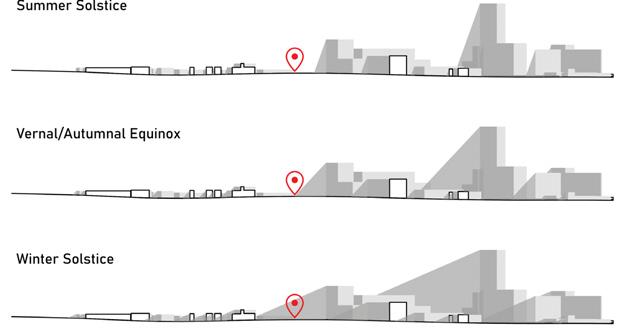
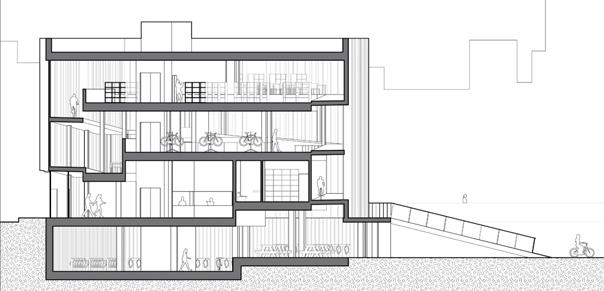
SEASONAL SHADOW ANALYSIS
WINTER SOLSTICE
VERNAL / AUTUMNAL EQUINOX
SUMMER SOLSTICE
3F RAMP VIEW
CAMBRIDGE COHOUSING
TYPE
Social Housing
DATE
December 2022
ADVISOR Sam Eby
SOFTWARE
Rhino, Enscape, Illustrator, Photoshop, InDesign






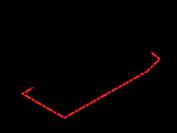
Cambridge CoHousing fosters diverse relationships through the sharing of food, culture, and a program that creates opportunity and growth for the occupants and surrounding public. The co-op houses a reciprocal program that exchanges volunteer work in the community kitchen, daycare, and various other tasks for language classes and job training.
To provide affordable housing, Cambridge CoHousing offers various unit types as well as a spectrum of unit furnishings. Occupants are given the opportunity and agency to design their space for their particular needs, as well as simply rent and live in a pre-designed unit. In addition, each unit provides the space to expand for the number of people housed.
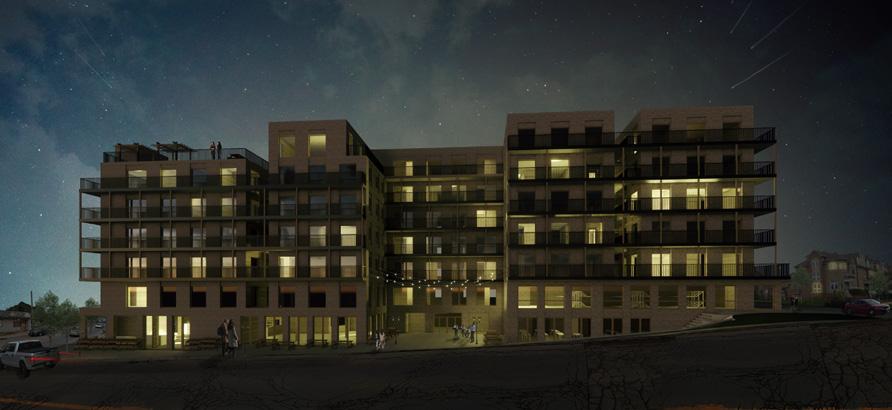

Hosted at Cambridge CoHousing, the Reciprocal Exchange Program is a great way for occupants to easily work, learn and grow. Inspired by Trampoline House located in Copenhagen, occupants are given the opportunity to receive job training and language classes in exchange for community services.


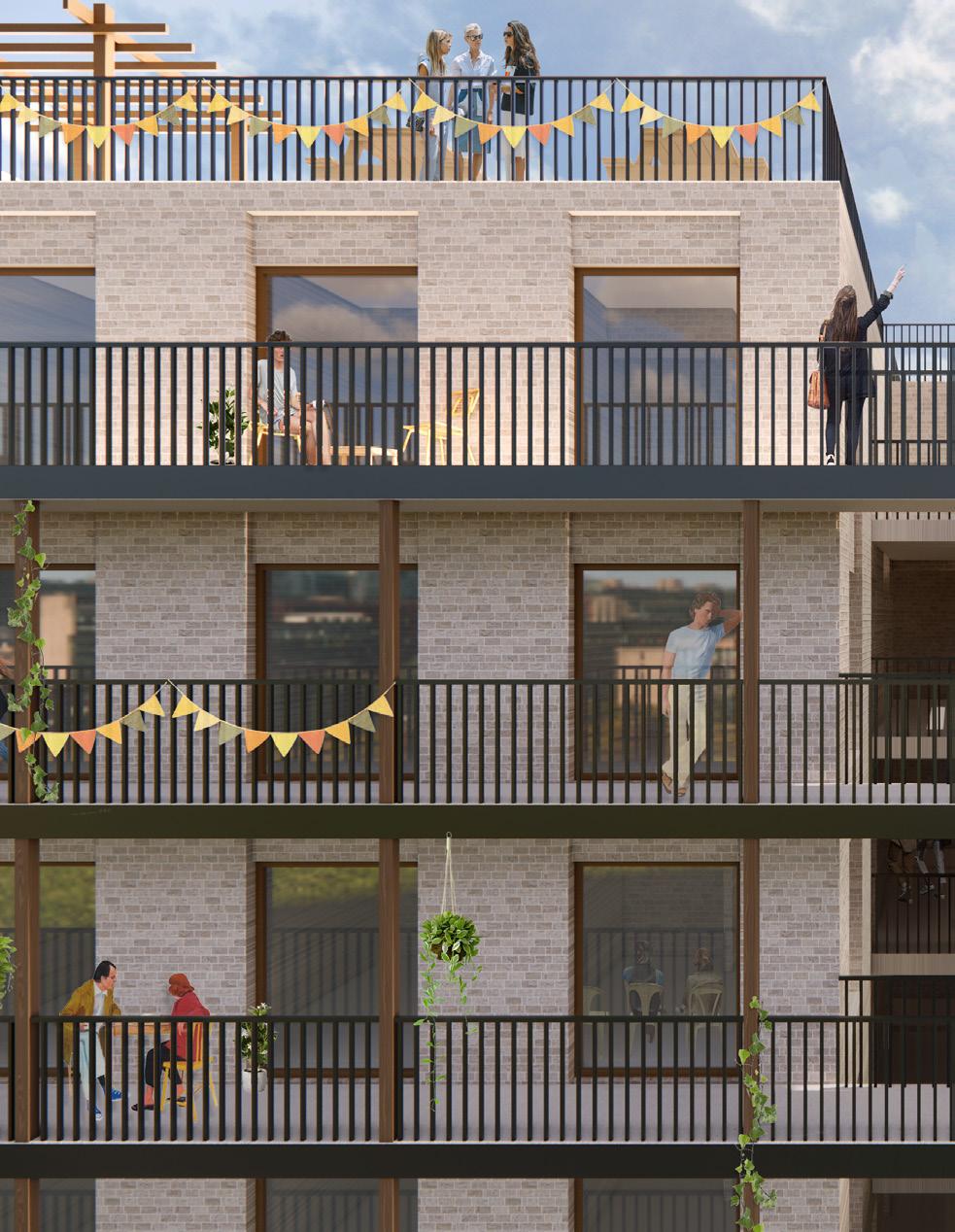
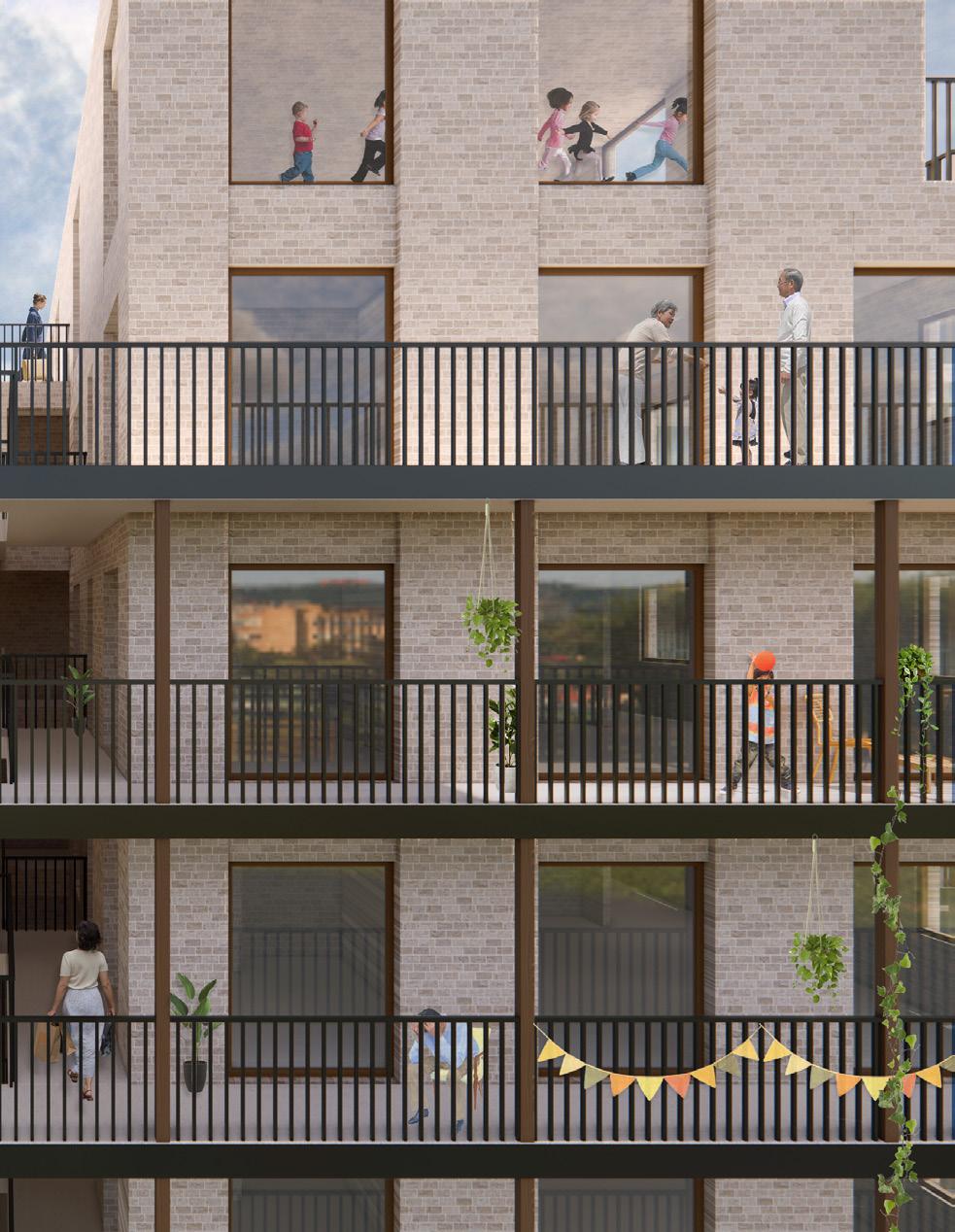

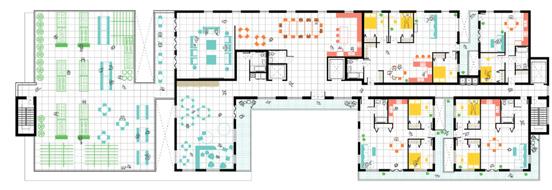
TOP FLOOR PLAN (8F / ROOF)

RESIDENTIAL FLOOR PLAN (3F-7F)

SECOND FLOOR PLAN

GROUND FLOOR PLAN





















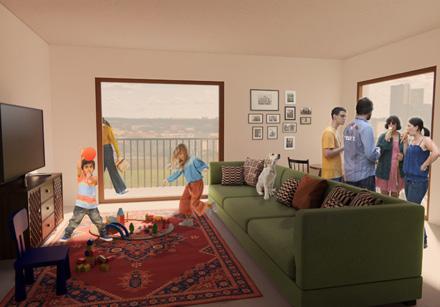

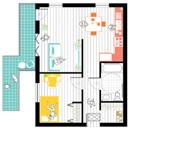
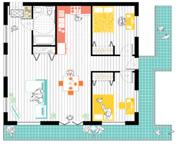
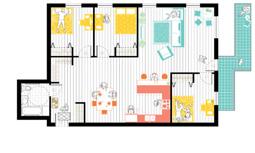
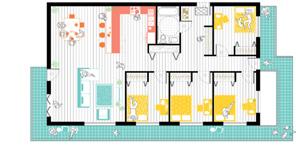
With the use of light wells between each unit, every unit has at least two window walls, and every bedroom has a least one window. This is to create a strong quality light and therefore living within each unit. All units also have access to a shared balcony, encouraging neighborly encounters.
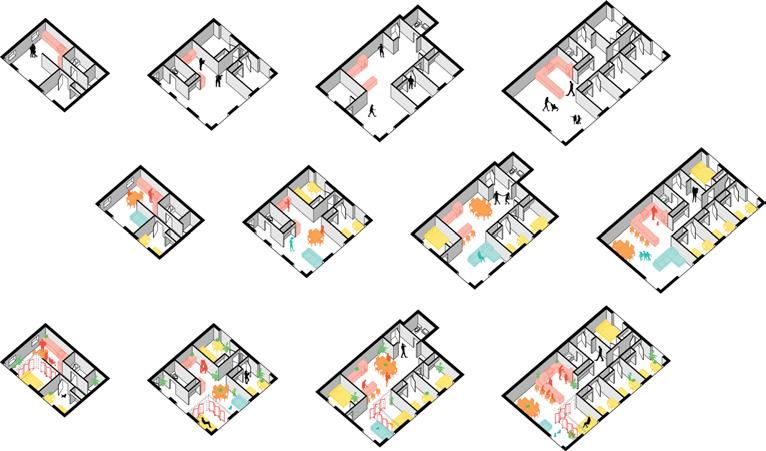
PLANS
4B LIVING AREA VIEW
4B KITCHEN VIEW
The Cambridge CoHousing design involves a strong focus on passive design. Light wells are integrated throughout the building between each unit to improve quality of light throughout each space. The south facing glazing and balconies are proportioned to each other in order to maximize heat gain from the sun during the winter months, and shading in summer months.
Cambridge CoHousing design also involves active systems. There is rainwater and solar energy collection located on the roof, and an allocated storage space on the ground floor to process and store rainwater and energy. To save on water and energy consumption, units contain only one bathroom, with a shared bathroom on each residential floor. In addition, laundry facilities are not contained within each unit, instead there is a set of shared washer and dryers on each residential floor.
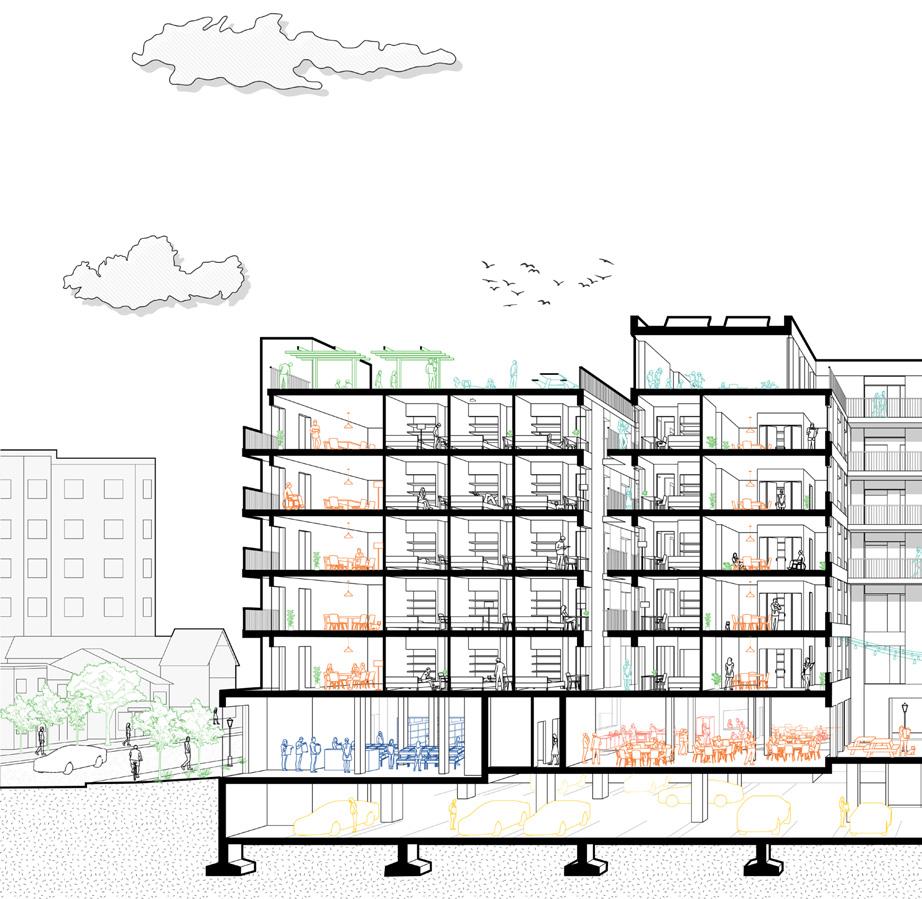


2B & 4B
TYPE
Physical Model
PHOTOGRAMMETRY
DATE
June 2023
ADVISOR
Lola Sheppard
SOFTWARE
Rhino, Grasshopper, Illustrator
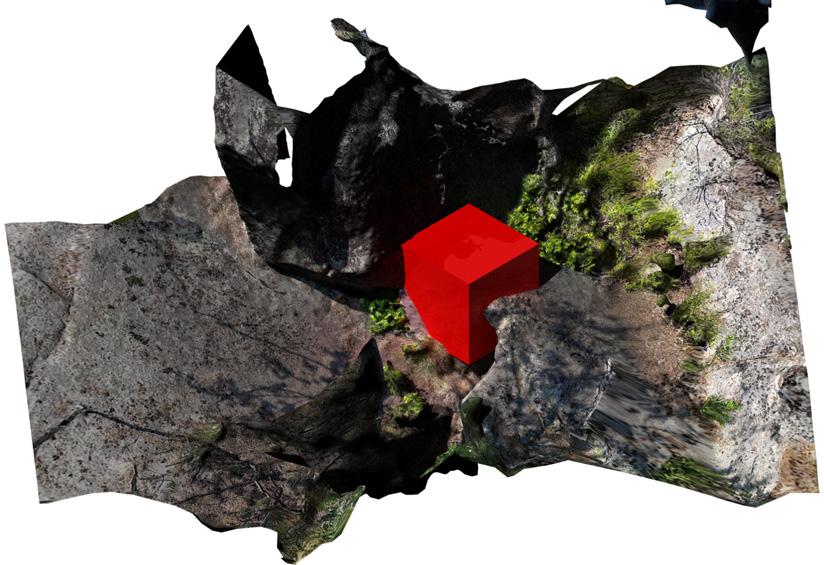
1027 is a 1:1 analysis and interpretation of a 8 cubic feet site located on the French River, Ontario. The digital process of the project included a photogrammetry model of the site that was converted from a mesh to a polygonal surface, then to a point cloud that was recreated with 1000+ wooden beads hung from a plywood structure.
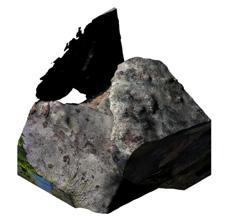



BUILDING


FIRST BEADS
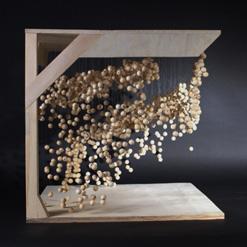

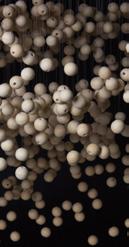



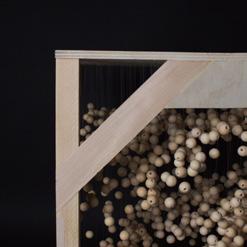
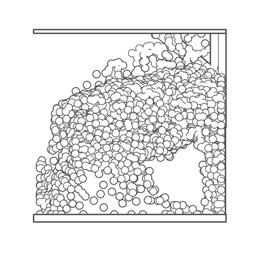
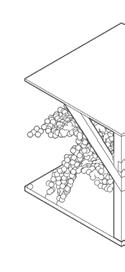
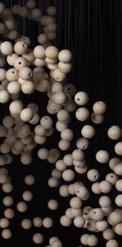
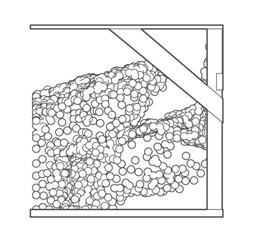

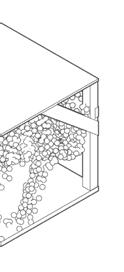




MATERIALS
1000+ wooden beads
1/2”, 3/4” scrap plywood
scrap hardwood
0.1mm sewing thread
Over the course of my 3B term in Fall 2024, I was lucky to be able to take two fabrication based courses as well as have full access to the Waterloo Architecture fabrication shop. These classes were both guided by professors in order to learn techniques, occasionally software and most importantly, equipment care and safety.
SQUISH FABRICATION PROJECTS
TYPE
Column

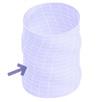
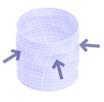
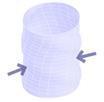

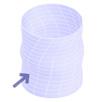
DIAGRAMMATIC AXOMETRICS

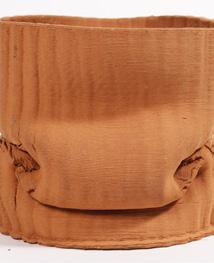

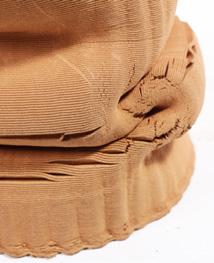


In groups of 4, we were tasked over the course of the term to incrementally design and print a 5ft column using a clay 3D printer. The intent was to reconsider the form work used to pour concrete columns, and instead implement a design that would remain as a shell to the column. SQUISH looks to experiment with weight, structure and the elastic quality of clay by printing forms that include intentional weak and strong points that would be manually deformed and ‘squished’ after being printed. This process was highly intensive in experimentation and, due it its inherently unpredictable nature, required many hours of printing and post-process work.
Cindy He, Tina Lin, Alisa Lau
SPOONS
Wood scraps carved into spoons by myself & fellow classmates, aiming to learn woodworking techniques. The spoons were all sold at the Bridge Night Market with all proceeds going to relief in Gaza.
DATE September-December 2024
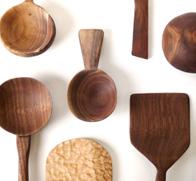
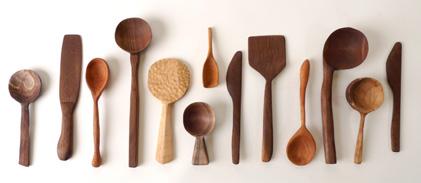
METROPOLITAN CHURCH MODEL
TYPE
Physical Model
DATE August 2023
ADVISOR Val Rynnimeri
Arch 248 Cultural History Project to build a sectional model of Étienne-Louis Boullée’s Metropolitan Cathedral. From available drawings of the conceptual building, a digital 3D model was made and then converted to 2D lines to be laser cut out of white museum board. These pieces were assembled to create the final product. The immense scale and grandeur is built in this (approximate) 1:200 is built by layering multiple laser cut pieces to create depth and detail in the model.

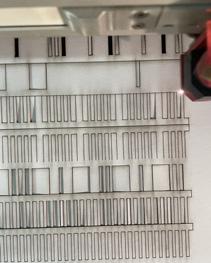

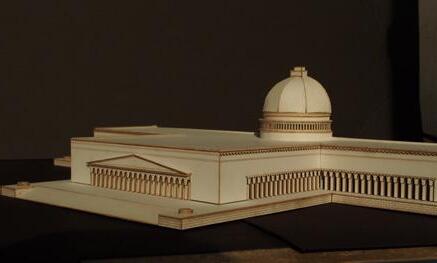
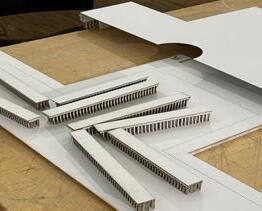
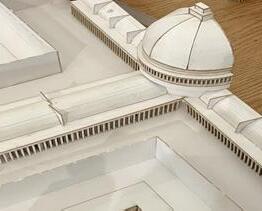
Jinhong Rioux
Dorcas Ng
Chelsea Wu
ASH BENCH
TYPE Wood Bench
DATE
December 2024
CLASS Intro to WoodWorking
In November 2025, my dad and I found 8ft ash boards in the dairy barn at my family farm, suspecting they were cut and sawn by a family member some odd 50+ years ago. Graded around No.1 common, the boards produced some distinct character with knots and different sizes in bench legs. The bench was completed as a recreation of another found online, intending to focus developing woodworking skills instead of design. Joinery is composed primarily of mortise and tenons, with movement joints and dowels to fix the back and seat.
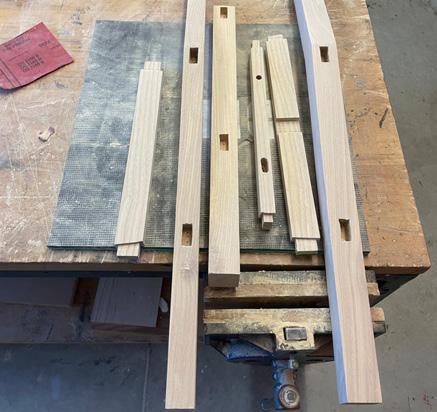
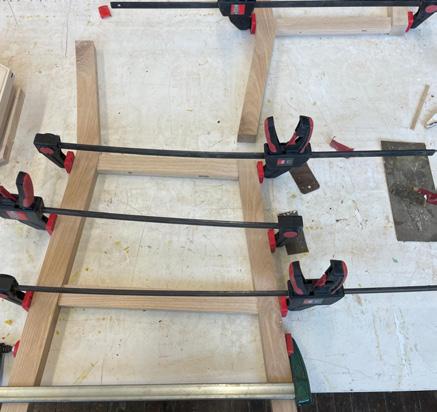

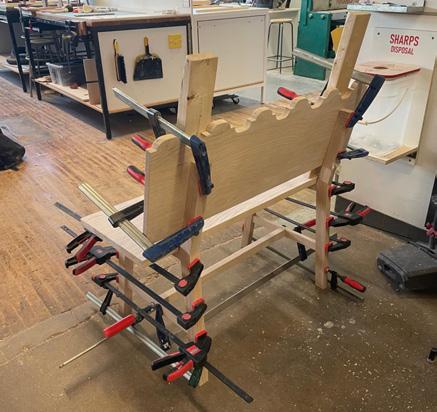
HAND-SANDING
BENCH LEG GLUING
FINAL GLUE
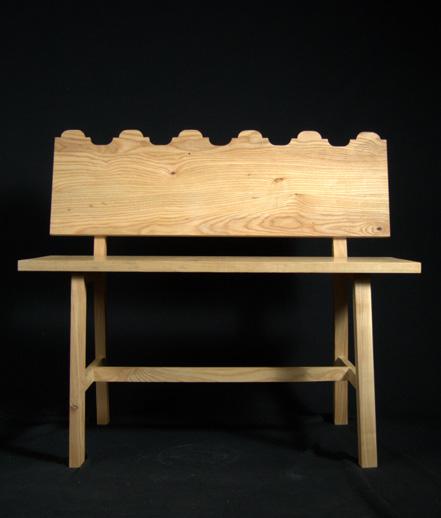
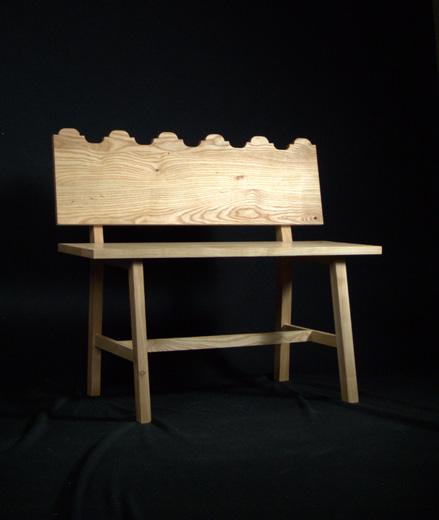
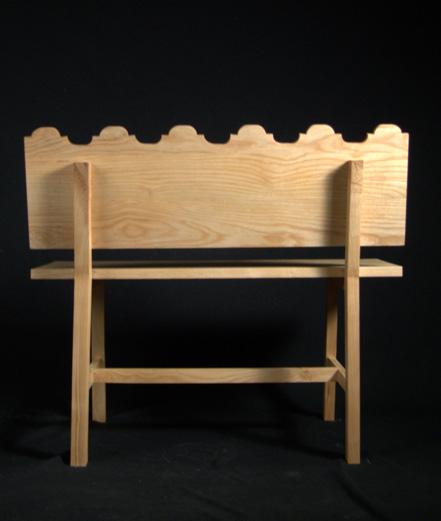
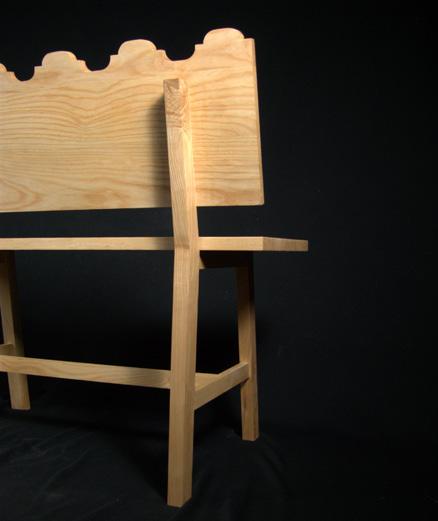
FINAL FRONT VIEW
FINAL BACK VIEW
gflmarsh@uwaterloo.ca
